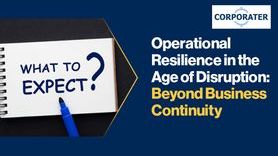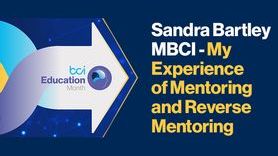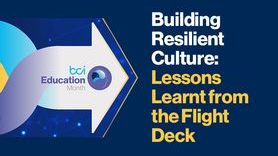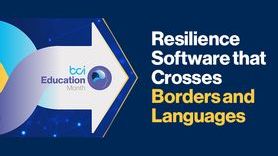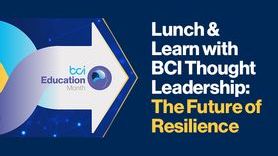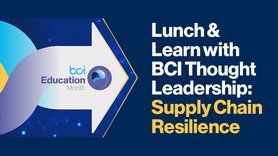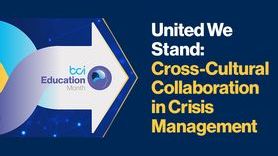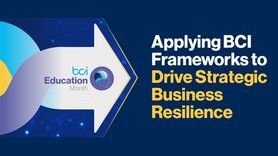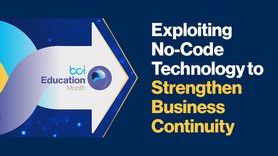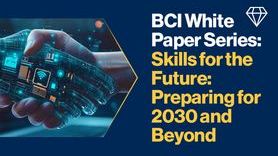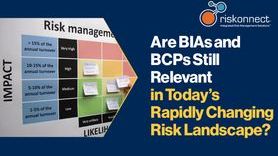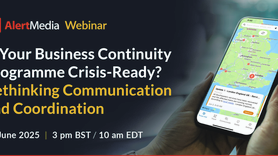Behind the Ballot: Strategic Vision
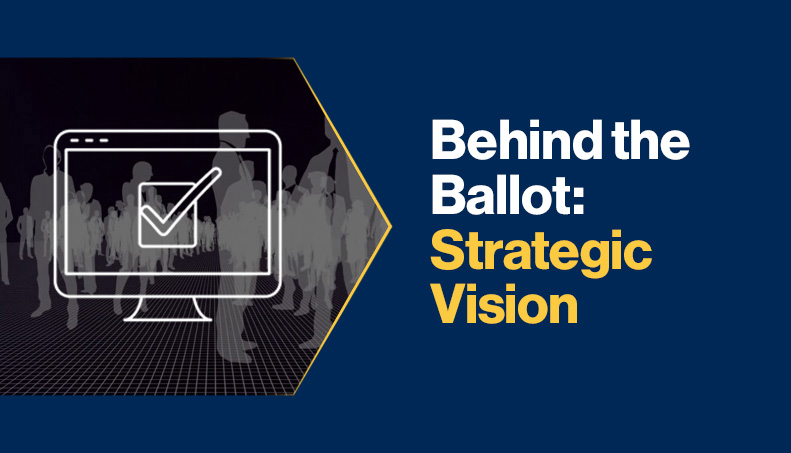
Our Members asked board election candidates (Question 1 of 2): How do you see artificial intelligence (AI) and emerging technologies shaping the future of business continuity and operational resilience over the next 5–10 years?
Atiq Bajwa FBCI
Over the next 5-10 years, AI will transform business continuity from a reactive to a predictive discipline. AI-powered systems can analyze historical data and scan environments in real-time for emerging threats, automate business impact analysis, and facilitate dynamic recovery strategies through advanced simulations. This shifts resilience from planning for known incidents to proactively mitigating complex emerging risks. Beyond automation, AI will enable scenario modelling at unprecedented scale, identifying vulnerabilities invisible to traditional analysis. However, technology introduces new dependencies such as cloud outages, algorithmic failures, etc. The profession must evolve to manage both traditional risks and technology-driven complexities. BC professionals who master AI as an analytical tool while maintaining critical human judgment will lead the next generation of organizational resilience, ensuring technology enhances rather than undermines continuity capabilities.
Disclaimer: AI was used to learn about the future trends in AI’s capabilities development
Desmond O'Callaghan Hon FBCI
AI is relevant to BCM/OR in two ways. The technology used to operate businesses and the technology we use for BC management. Technology has always featured prominently in the evolution of BCM in both respects and always will. Faster, better, less costly technology solutions for BC have been a huge driver for improved business resilience for a long time. AI is now an accelerant in this evolution. It’s here and we must embrace it. There are some challenges and risks, as with anything new. Clearly, there is short term benefit in AI streamlining BCM activities such as risk assessment, BIA, plan assembly and exercising. There is a caution that human intelligence remains vital for data interpretation and creation of optimum continuity solutions based on analytical output. In the longer term, AI will learn and be able to do more in resilient design and automated solutions.
Federica Maria Rita Livelli MBCI
AI is among us and is here to stay as a strategic lever for organizations to achieve business continuity, operational, and cyber resilience. AI systems will continue to significantly improve traditional risk management, continuity and security processes, enabling results beyond the reach of manual analysis and outperforming humans in detecting nuanced patterns in large amounts of unstructured data. The use of AI in BIA, risk assessments, cybersecurity, and crisis management is destined to continue, and future developments can undoubtedly improve efficiency and speed in terms of mitigation, preparedness, response, recovery, and recovery of activities. With the associations I serve, we promote the ethical and responsible use of AI in organizations in terms of business continuity, risk management, and cybersecurity, considering that AI has its limitations. To ensure its effective use, it is important to have security measures in place to enhance, rather than replace, human decision-making.
Gregory Descamps MBCI
The rapid evolution of AI over the past few months shows how difficult it is to predict its long-term impact over the next 5–10 years. In the near term, I see AI as a practical assistant that can enhance efficiency, awareness, and engagement within business continuity and operational resilience. AI can support professionals by reviewing and simplifying BCMS and resilience frameworks, making them clearer, more accessible, and easier to apply across organizations—not only by BCM managers. It can also assist in creating engaging exercise materials and awareness content to strengthen preparedness. Within the risk domain, AI’s capacity to process large volumes of data and identify what truly matters will refine all-risk assessments and improve decision-making. Overall, AI will augment, not replace, human expertise—helping organizations build smarter and more adaptive resilience capabilities.
Disclaimer: An AI tool was used to conduct grammar checks and refine the language in this response
Kelly Blakeley MBCI
We are already seeing new technologies being incorporated into business continuity platforms, as well as our organisational operations in general. This will continue as integration becomes more sophisticated, governance frameworks are refined, regulations are embedded and human capabilities adapt to usage. Over the next 5 years. We will see more implementation of digital twins to highlight real-time risks, agentic AI, improved horizon scanning and automation of tasks. With increasing automation likely to remove various tasks and the risk landscape evolving to include new risks from these technologies, the result if this is going to create an increased need for professionals that can effectively and competently lead through ambiguous, complex and volatile scenarios with emotional intelligence, oversight, assurance and leadership. I see this only increasing in intensity as generative AI evolves to become closer to human capabilities in adapting to nuance, context and ethics over the next 10 years.
Maura Santunione MBCI
I truly embrace the MIT’s concept of modern AI: AI will augment, not replace, the human in its role as pioneer and builder of today’s and tomorrow’s world, by: - Accelerating decision processes. - Facilitating complex context management. - Supporting critical and dangerous duties, advancing diagnostics and medical capabilities safeguarding public health and global well-being. Business Continuity and Operational Resilience will play a critical role in contributing to these advances and ensuring their ethical deployment, and they will, in turn, be profoundly enhanced by them. In my future thinking, this is my best-case scenario. The capability to achieve it depends entirely on us.
Mohamed Hassan MBCI
I’m pleased to see this question, as it closely relates to the session, I delivered during the last BCAW event, where I emphasized the role of AI and emerging technologies in Business Continuity Management (BCM) and Operational Resilience. In today’s business environment, new technologies simultaneously enhance agility and introduce new risks. However, I believe AI will significantly transform BCM over the next 5 to 10 years, becoming a true “BC champion” that supports resilience leaders by automating coordination, updates, and maintenance of BCMS activities. Furthermore, AI and emerging technologies will integrate with internal and external systems to shift BCM and Operational Resilience from reactive to proactive, driven by predictive analytics that minimize disruption probabilities. Ultimately, AI will evolve through continuous learning from resilience professionals, creating a ready-made industry-specific BCM and OR ecosystems powered by millions of best practices applicable across sectors such as healthcare, telecommunications, and beyond.
Disclaimer: An AI tool was used to conduct grammar checks and refine the language in this response
Rajesh Pillai MBCI
Artificial intelligence and emerging technologies will transform business continuity and operational resilience by shifting from static frameworks to dynamic, intelligence-driven ecosystems. Over the next 5–10 years, AI will enable predictive risk modeling, real-time scenario simulations, and automated response mechanisms, reducing downtime and enhancing agility. Machine learning will strengthen decision-making by correlating global risk variables, while IoT and blockchain will provide transparency and infrastructure visibility. Generative AI will accelerate crisis communication and knowledge management, ensuring rapid stakeholder engagement. However, this evolution must be underpinned by strong governance and ethical AI adoption to safeguard trust, privacy, and compliance. Boards will play a critical role in embedding accountability frameworks, ensuring technology serves organizational resilience rather than introducing systemic vulnerabilities. By balancing innovation with responsible oversight, organizations can harness AI to create resilient, adaptive strategies that protect value and uphold stakeholder confidence in an increasingly volatile environment.
Disclaimer: An AI tool was used to conduct grammar checks and refine the language in this response. It was also used to assist in drafting the responses. AI served strictly as a writing aid, not for generating original ideas or decision-making. Ethical use and transparency were prioritized.
Sanjay Vijayaraghavan KV MBCI
AI and new technologies are already changing the way we think about business continuity and resilience, and this will only accelerate in the next decade. I see AI helping organizations move from reacting to disruptions to actually predicting and preventing them. Tools that analyse data in real-time, simulate different scenarios, and flag early warning signs will make responses faster and more accurate. Technologies such as IoT and digital twins will give leaders on what's happening across operations. But while technology can enhance awareness and speed, it's still people who interpret, decide and lead during uncertainty. The real value will come from blending AI's intelligence with human judgement, empathy, and experience to build a truly adaptive and trusted resilience culture.
Simon Contini FBCI
From my professional perspective, artificial intelligence and automation are already becoming integral to the entire business continuity and resilience life cycle. As our supply chains become increasingly complex and globally interconnected, the role of human power will shift. What we find challenging today can be effectively managed with AI and automation, requiring fewer people or providing analysis depth that current resourcing didn't allow. This enables the potential of these technologies to enhance efficiency and productivity in the workforce significantly. However, this does not ignore the significant shortage of resilience skills today, which are not security skills. AI will undoubtedly bring new impacts, risks, and challenges to resilience and continuity. Fostering organizational personal resilience and adaptability will be key.
Disclaimer: An AI tool was used to conduct a grammar and spell check in this response.
Question 2 of 2: What role should the BCI play in guiding its members through the adoption of these technologies?
Atiq Bajwa FBCI
BCI should serve as the trusted bridge between technological innovation and practical resilience application. This requires developing comprehensive guidance on emerging technologies through rigorous research of practical use-cases across industries and regions. BCI’s Special Interest Groups (SIGs) should be formed for sharing real-world experiences, successes, and failures. By using case studies, creating implementation toolkits, and hosting collaborative forums, BCI can empower members to transition from uncertainty to confidence in technology adoption. The Institute should also advocate for members at policy and standards levels, ensuring BC perspectives shape how regulators and technology providers approach resilience-critical systems. Through this leadership, BCI will ensure members leverage these technologies to build more predictive, efficient, and robust resilience capabilities while maintaining the profession's core principles.
Disclaimer: AI was used to learn about the future trends in AI’s capabilities development
Desmond O'Callaghan Hon FBCI
BCI’s role in adoption of AI will be to monitor and research leading practices as they evolve on the front lines and share insights with members. This will depend on member engagement (human to human), including communication with chapters and special interest groups. Research surveys will continue to be an important component of thought leadership, but to go beyond our members’ expertise, I think engagement with academia can take on greater importance for staying abreast of emerging technology developments. Regular, dynamic updates and supplements, to the GPG will be essential to provide value to our members in what they need to know.
Federica Maria Rita Livelli MBCI
The BCI should rely on recognized professional members able to provide professional knowledge and increase awareness through webinars or other events. Furthermore, the BCI Thought Leadership team together with BCI SIGs and chapters should be more involved and work holistically, rather than in silos, to guidelines or share experiences. It would be also beneficial for BCI members to involve Governmental entities and Universities to create ad hoc training and courses for acquiring technical certifications at discounted prices.
Gregory Descamps MBCI
The BCI’s role should be to guide its members on how AI can act as an enabler across the resilience space rather than focusing on technology adoption alone. Given the vast possibilities of AI, the BCI can help members focus on key areas by selecting relevant subjects for presentations, content creation, and practical resources. By breaking AI’s application into specific domains—Risk, Crisis, Security, Business Continuity, Emergency Management, and Disaster Recovery—the BCI can provide targeted insights, examples, and guidance on how AI can enhance decision-making, awareness, and operational effectiveness. Sharing lessons learned, best practices, and practical use cases will help members understand where AI adds real value while mitigating risks.
Disclaimer: An AI tool was used to conduct grammar checks and refine the language in this response
Kelly Blakeley MBCI
The recent MIT study shows, 95% of organisations are failing with their generative AI pilots largely due to organisations and teams struggling with integration. This includes areas relating to resilience. Currently, we’re in the trial-and-error phase of this new era My personal opinion is that the BCI has multiple roles as follows: - Standing at the forefront of what is going on in the tech world relating to resilience - Creating a diverse community of skills, sectors, perspectives and cultures through our network of members and professionals, I see this as our ‘resilience infrastructure’ - Feeding into and highlighting good practice in resilience As the question suggests, this is largely about empowering people; through skills, community, confidence and capability. The Boards role here is setting the strategic direction and oversight of the governance framework to empower the central office, its staff and the membership.
Maura Santunione MBCI
The BCI should play a crucial role in supporting and promoting the ethical deployment of these technologies. It can achieve this by educating professionals and by serving as the central forum where digital transformation is facilitated and guided with the integration of resilience and antifragility. This makes the BCI a trusted ethical partner for the main actors driving this change.
Mohamed Hassan MBCI
I believe BCI can offer many ideas in guiding its members through the adoption of these technologies through: To strengthen the community’s knowledge and readiness for emerging technologies, BCI can launch a series of webinars, research initiatives, and thought-leadership sessions focused on AI and emerging technologies in BCM and Resilience. It can also develop tailored training programs addressing the practical applications of AI, automation, and analytics within the resilience domain. Collaboration with BCI’s technology partners should be encouraged to host dedicated sessions sharing best practices for adopting emerging technologies responsibly. BCI could create an online collaboration platform, similar to the mentoring hub, where members can exchange experiences and seek professional guidance across sectors. Developing formal AI good-practice guidelines would also help standardize the responsible use of AI in BCM, highlighting benefits, risks, and ethical considerations. Finally, BCI could consider launching its Resilience AI tool, trained on expert BCM content.
Disclaimer: An AI tool was used to conduct grammar checks and refine the language in this response
Rajesh Pillai MBCI
The BCI should serve as a trusted advisor and thought leader in guiding members through the responsible adoption of AI and emerging technologies. Its role must extend beyond advocacy to providing structured frameworks, best-practice guidelines, and governance models that ensure resilience strategies remain ethical, compliant, and effective. By curating research, hosting knowledge-sharing forums, and developing certification programs focused on technology integration, BCI can empower professionals to make informed decisions. Additionally, BCI should champion collaboration between practitioners, regulators, and technology providers to address systemic risks and interoperability challenges. Through scenario-based training and benchmarking, members can gain practical insights into leveraging innovation without compromising continuity principles. Ultimately, BCI’s leadership in setting standards and promoting accountability will help the profession embrace technological transformation confidently while safeguarding organizational trust and stakeholder value.
Disclaimer: An AI tool was used to conduct grammar checks and refine the language in this response. It was also used to assist in drafting the responses. AI served strictly as a writing aid, not for generating original ideas or decision-making. Ethical use and transparency were prioritized.
Sanjay Vijayaraghavan KV MBCI
I believe the BCI can play a huge role in helping members understand and adopt new technologies with confidence and responsibility. Many professionals are curious about AI but unsure where to start or how it fits into resilience practice. The BCI can bridge that gap by offering practical guidance, sharing real success stories, and creating forums where members can learn from each other's experiences. Most importantly, the BCI can help members see technology as an enabler, not a threat, and support them in developing the skills and mindset needed to stay relevant in a changing world.
Simon Contini FBCI
Both Generative AI and Agentic AI have positive and negative implications for organizations and people around the world. The BCI is a thought leader in Resilience and business continuity, including its members on this journey. Focusing on context, experience, education, risk management, ethical guidelines, advocacy, and integration, the BCI empowers its members to realize AI’s potential. Given the progression of AI, the BCI needs to be adaptive and prospective so as to best impact its advice. In doing so, the BCI has the potential to enable its members to create a more resilient world and develop resilient future-ready organizations that will thrive in an AI age where human context with AI will matter most.
Disclaimer: An AI tool was used to conduct a grammar and spell check in this response.






